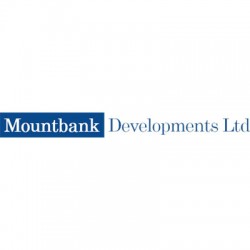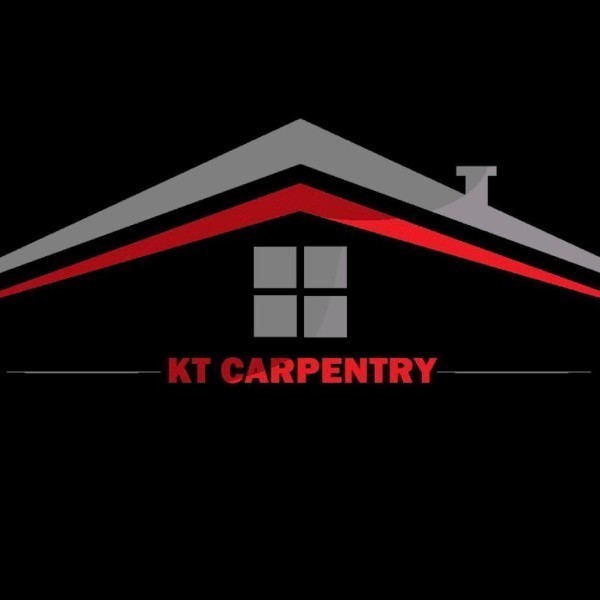Property Refurbishment in Fordingbridge
Filter your search
Post your job FREE and let trades come to you
Save time by filling out our simple job post form today and your job will be sent to trades in your area so you can sit back, relax and wait for available trades to contact you.
Post your job FREETransform Your Space with Modernized:
Your Premier Renovation Partner
Since its inception in 2015, Modernized has been... read more »
Search Property Refurbishment in places nearby
Understanding Property Refurbishment in Fordingbridge
Property refurbishment in Fordingbridge is a thriving activity, offering homeowners and investors the opportunity to enhance the value and aesthetic appeal of their properties. Nestled in the picturesque county of Hampshire, Fordingbridge is a charming town that blends historical allure with modern conveniences. This article delves into the various aspects of property refurbishment in this delightful locale, providing insights into the processes, benefits, and considerations involved.
The Charm of Fordingbridge
Fordingbridge, with its quaint streets and scenic surroundings, is a town that captures the essence of traditional English charm. Its rich history, coupled with a vibrant community, makes it an attractive place for property investment. The town's proximity to the New Forest National Park adds to its appeal, offering residents a perfect blend of rural tranquillity and urban accessibility.
Historical Significance
Fordingbridge boasts a rich tapestry of history, with landmarks such as the medieval Great Bridge and the 12th-century St. Mary's Church. These historical elements not only add character to the town but also influence the architectural styles prevalent in the area. Refurbishing properties here often involves preserving these historical features while incorporating modern amenities.
Community and Lifestyle
The community in Fordingbridge is known for its warmth and hospitality. The town hosts various events and festivals throughout the year, fostering a strong sense of community. This vibrant lifestyle is a significant draw for those looking to refurbish properties, as it enhances the living experience and adds value to investments.
Benefits of Property Refurbishment
Refurbishing a property in Fordingbridge offers numerous benefits, from increasing property value to improving living conditions. Whether you're a homeowner looking to enhance your living space or an investor aiming to maximise returns, refurbishment can be a rewarding endeavour.
Increased Property Value
One of the primary benefits of property refurbishment is the potential increase in property value. By updating and modernising a property, owners can significantly enhance its market appeal. This is particularly advantageous in a desirable location like Fordingbridge, where property demand is consistently high.
Improved Energy Efficiency
Modern refurbishment projects often focus on improving energy efficiency. By incorporating energy-saving technologies and materials, property owners can reduce utility costs and contribute to environmental sustainability. This is increasingly important as energy efficiency becomes a key consideration for buyers and renters alike.
Enhanced Aesthetic Appeal
Refurbishment allows property owners to update the aesthetic appeal of their homes. Whether it's through modern design elements, updated fixtures, or improved landscaping, a well-executed refurbishment can transform a property into a visually stunning space.
Key Considerations for Refurbishment
Embarking on a property refurbishment project in Fordingbridge requires careful planning and consideration. From understanding local regulations to selecting the right materials, several factors can influence the success of a refurbishment project.
Local Regulations and Planning Permissions
Before commencing any refurbishment project, it's essential to understand the local regulations and planning permissions required. Fordingbridge, like many historical towns, may have specific guidelines to preserve its architectural heritage. Consulting with local authorities and obtaining the necessary permits is a crucial step in the refurbishment process.
Budgeting and Cost Management
Effective budgeting is vital for any refurbishment project. It's important to set a realistic budget that accounts for all aspects of the project, from materials and labour to unexpected expenses. Working with experienced contractors and suppliers can help ensure that the project stays within budget and is completed on time.
Choosing the Right Materials
The choice of materials can significantly impact the outcome of a refurbishment project. In Fordingbridge, where historical charm is a key feature, selecting materials that complement the existing architecture is crucial. Additionally, opting for sustainable and durable materials can enhance the longevity and efficiency of the refurbishment.
Steps Involved in Property Refurbishment
Refurbishing a property involves several key steps, each requiring careful attention and expertise. Understanding these steps can help property owners navigate the refurbishment process more effectively.
Initial Assessment and Planning
The first step in any refurbishment project is to conduct a thorough assessment of the property. This involves identifying areas that require improvement and developing a comprehensive plan that outlines the scope of the project. Engaging with architects and designers during this phase can provide valuable insights and ensure that the project aligns with the owner's vision.
Design and Development
Once the initial assessment is complete, the next step is to develop detailed design plans. This phase involves selecting design elements, materials, and finishes that align with the project's goals. Collaboration with experienced designers can help create a cohesive and aesthetically pleasing design that enhances the property's overall appeal.
Execution and Construction
The execution phase involves the actual construction work, where the planned designs are brought to life. This phase requires skilled labour and effective project management to ensure that the work is completed to a high standard. Regular communication with contractors and site visits can help monitor progress and address any issues that arise.
Final Inspection and Handover
Once the construction work is complete, a final inspection is conducted to ensure that all aspects of the project meet the required standards. This involves checking for any defects or unfinished work and making necessary adjustments. Upon successful completion, the property is handed over to the owner, marking the end of the refurbishment process.
Challenges in Property Refurbishment
While property refurbishment offers numerous benefits, it also presents certain challenges. Understanding these challenges can help property owners prepare and mitigate potential risks.
Dealing with Unexpected Issues
Refurbishment projects often uncover unexpected issues, such as structural problems or outdated wiring. These issues can lead to delays and increased costs if not addressed promptly. Conducting a thorough assessment and working with experienced professionals can help identify and resolve these issues early in the process.
Managing Time and Resources
Effective time and resource management is crucial for the success of a refurbishment project. Delays can occur due to various factors, such as supply chain disruptions or adverse weather conditions. Developing a detailed project timeline and maintaining open communication with contractors can help keep the project on track.
Ensuring Quality and Compliance
Maintaining high-quality standards and ensuring compliance with local regulations is essential for any refurbishment project. Regular inspections and quality checks can help ensure that the work meets the required standards and adheres to all relevant regulations.
Choosing the Right Professionals
Selecting the right professionals is a critical aspect of a successful refurbishment project. From architects and designers to contractors and suppliers, each plays a vital role in the project's outcome.
Finding Experienced Contractors
Experienced contractors bring valuable expertise and skills to a refurbishment project. It's important to select contractors with a proven track record and positive references. Conducting interviews and reviewing past projects can help identify the right professionals for the job.
Collaborating with Architects and Designers
Architects and designers play a crucial role in shaping the vision and design of a refurbishment project. Collaborating with these professionals can help create innovative and functional designs that enhance the property's appeal. It's important to choose architects and designers who understand the local context and can incorporate historical elements into the design.
Working with Reliable Suppliers
Reliable suppliers are essential for ensuring that the necessary materials and products are available when needed. Establishing strong relationships with suppliers can help secure high-quality materials at competitive prices. It's important to work with suppliers who have a reputation for reliability and quality.
Case Studies of Successful Refurbishments
Examining case studies of successful refurbishment projects in Fordingbridge can provide valuable insights and inspiration for property owners. These examples highlight the potential of refurbishment to transform properties and enhance their value.
Revitalising a Historical Cottage
One notable case study involves the refurbishment of a historical cottage in Fordingbridge. The project focused on preserving the cottage's original features while incorporating modern amenities. The result was a stunning blend of old and new, enhancing the property's charm and functionality.
Modernising a Family Home
Another successful project involved the modernisation of a family home. The refurbishment included updating the kitchen and bathrooms, improving energy efficiency, and enhancing the property's aesthetic appeal. The project not only increased the property's value but also improved the family's quality of life.
Transforming a Commercial Space
Refurbishment is not limited to residential properties. A successful project in Fordingbridge involved transforming a commercial space into a vibrant retail outlet. The refurbishment focused on creating an inviting and functional space that attracted customers and boosted business.
Future Trends in Property Refurbishment
The property refurbishment landscape is constantly evolving, with new trends and technologies shaping the industry. Understanding these trends can help property owners make informed decisions and stay ahead of the curve.
Embracing Sustainable Practices
Sustainability is becoming increasingly important in property refurbishment. Incorporating eco-friendly materials and energy-efficient technologies can enhance a property's appeal and reduce its environmental impact. This trend is expected to continue as more property owners prioritise sustainability in their refurbishment projects.
Incorporating Smart Home Technologies
Smart home technologies are revolutionising the way properties are refurbished. From automated lighting and heating systems to advanced security features, these technologies offer convenience and efficiency. Incorporating smart home features can enhance a property's value and appeal to tech-savvy buyers.
Focusing on Wellness and Comfort
Wellness and comfort are becoming key considerations in property refurbishment. Creating spaces that promote relaxation and well-being is a growing trend, with features such as spa-like bathrooms and serene outdoor areas gaining popularity. This focus on wellness is expected to shape the future of property refurbishment.
Frequently Asked Questions
- What is property refurbishment? Property refurbishment involves updating and improving a property to enhance its value and functionality. This can include structural repairs, modernising interiors, and improving energy efficiency.
- Why is Fordingbridge a popular location for refurbishment? Fordingbridge's historical charm, vibrant community, and proximity to natural attractions make it an attractive location for property investment and refurbishment.
- What are the benefits of refurbishing a property? Benefits include increased property value, improved energy efficiency, and enhanced aesthetic appeal. Refurbishment can also improve living conditions and attract potential buyers or renters.
- What challenges might I face during a refurbishment project? Challenges can include unexpected structural issues, managing time and resources, and ensuring quality and compliance with local regulations.
- How can I find the right professionals for my refurbishment project? Look for experienced contractors, architects, and designers with positive references and a proven track record. Conduct interviews and review past projects to ensure they meet your needs.
- What future trends should I consider in property refurbishment? Consider embracing sustainable practices, incorporating smart home technologies, and focusing on wellness and comfort to enhance your property's appeal and value.
Property refurbishment in Fordingbridge offers a wealth of opportunities for enhancing the value and appeal of properties. By understanding the benefits, challenges, and trends involved, property owners can embark on successful refurbishment projects that transform their spaces and improve their quality of life.




































